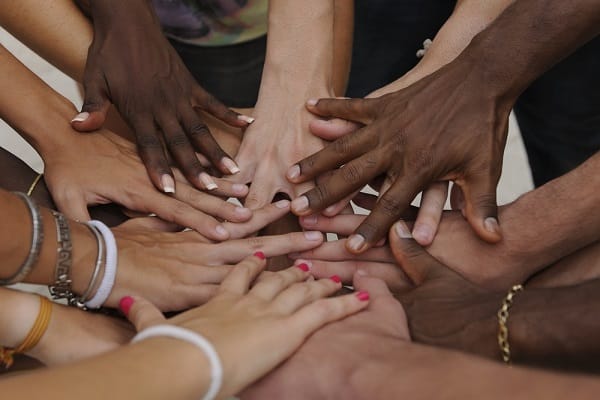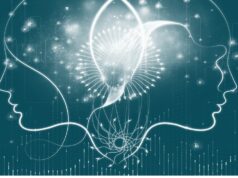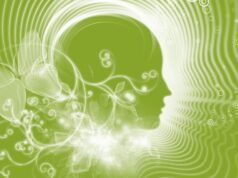Throughout my life, like you, I’ve struggled to make sense of the world. I’ve always been on a journey which has led me to a conclusion about our inherent divinity. This might sound lofty, but it’s a very practical way of being. This construct helped me to develop my leadership development model, based on strong principles and mindset approaches which help leaders to get the best out of themselves and their teams. One of the components of this is the mindset of unity consciousness. In this article, I attempt to explain how adopting unity consciousness can help along the way to provide the answers to problems we are all looking to solve. I delve into the transformative power of embracing unity consciousness. I explore its profound impact on our perception and interaction with life’s myriad facets.
What is unity consciousness?
Unity consciousness is a concept deeply rooted in spiritual and philosophical realms. It posits that all life is interconnected, transcending beyond individuality and separateness. It stands in stark contrast to the paradigm of duality. The idea of duality perceives existence through lenses of opposites: good and bad, right and wrong, us and them. It’s a different way of looking at the world than the way we have been programmed to. If we can look at the world differently as the double-slit experiment demonstrated, then our experience will be different. Richard P Feynman discusses this phenomenon in his book QED – The Strange Theory of Light and Matter.
Unity Consciousness vs. Duality
In a world governed by duality, separations become the norm, fostering environments ripe for conflict, judgment, and division. Unity consciousness, on the other hand, dissolves these barriers. It promotes a holistic understanding that we are all part of a larger, interconnected whole. Neuroscientific research supports this. The research indicates that practices like meditation, which are often associated with unity consciousness, can alter brain structures, enhancing empathy and social cohesion.
The concepts of “duality” and “unity consciousness” are philosophical and spiritual ideas that have been explored in various traditions and teachings throughout history. Here’s a breakdown of each:
Duality
- Definition: Duality refers to the perception of existence as being based on opposites. This can include concepts like good and evil, light and dark, male and female, etc. It’s the idea that for every action, there’s an opposite and equal reaction.
- Origins: Many religious and philosophical traditions discuss duality. For instance, in Taoism, the concept of Yin and Yang represents the interdependent opposites that make up the natural world.
- Implications: Living in a state of duality often means perceiving the world in terms of contrasts and conflicts. This can lead to feelings of separation, competition, and judgment.
Unity Consciousness
- Definition: Unity consciousness, on the other hand, refers to the understanding or belief that everything is interconnected. Everything is part of a singular whole. It’s the idea that, at a fundamental level, there are no true separations between things.
- Origins: This concept is found in many spiritual traditions. Hinduism demonstrates the concept with the idea of “Brahman” or universal consciousness. Buddhism also includes the idea of interconnectedness. Many other mystical teachings are based on unity consciousness.
- Implications: Embracing unity consciousness can lead to feelings of oneness, compassion, and love. It often involves transcending the ego and realizing a deeper connection with all of existence.
Comparing Duality and Unity Consciousness
- Perception: Duality focuses on the differences and separations between things. Unity consciousness emphasizes the interconnectedness and oneness of all things.
- Experience: Living in a state of duality can lead to conflict and competition. Things are often seen in terms of “us vs. them.” Unity consciousness promotes harmony, understanding, and compassion. Everything is seen as part of a larger whole.
- Evolution of Consciousness: Some spiritual teachings suggest that humanity is evolving from a state of duality consciousness to one of unity consciousness. This evolution is seen as a move towards greater awareness, compassion, and understanding.
In summary, while duality focuses on the contrasts and conflicts inherent in existence, unity consciousness emphasizes the interconnectedness and oneness of all things. Both concepts offer unique perspectives on the nature of reality and our place within it.
The Ego, Duality, and the Fear of Unity Consciousness
The ego, often regarded as our self-constructed identity, inherently promotes duality by perpetuating a sense of “I” separate from “the other.” This dynamic inherently instils a fear of love and unity consciousness. True, unconditional love dissolves the barriers that the ego works so diligently to uphold. The ego thrives on separation, competition, and comparison. All of these factors are antithetical to the principles of unity consciousness.
Neuroscientifically, our brains are wired with a negativity bias and a primal instinct to perceive threats. Historically these programmes have been essential for survival. This wiring naturally propels us towards a perception of separation and defensiveness. However, neuroscience also provides hope; through neuroplasticity. This is the brain’s ability to reorganize itself by forming new neural connections. We can rewire our brains to lean towards unity consciousness.
Micro Changes to Macro Transformations: The Power of Focus, Intent, and Aspiration
Moving toward unity consciousness requires us to adjust our focus, purpose, dedication, and goals. It’s essential to recognize that small changes can lead to significant transformations. Throughout history, we’ve seen how a collective change in individual actions and thoughts can create massive societal shifts. For example, the Civil Rights Movement in the United States grew from both individual and group shifts toward values like equality, justice, and unity. This powerful movement eventually dismantled deep-rooted systems of segregation and prejudice.
In the same vein, the worldwide push for environmental sustainability has gained momentum from individuals making small changes. Actions like embracing eco-friendly habits, when done collectively, lead to significant impacts on policies and industry norms.
As we embark on this path, it’s crucial to foster trust. We need to believe that our combined efforts toward unity consciousness will make a difference, even when faced with daunting obstacles. This trust, combined with faith and optimism, lays the foundation for our actions. It ensures we remain committed to the transformative energies of love, empathy, and unity, even when life throws its unpredictable challenges our way.
Global Conflicts and the Ego: A Unity Consciousness Perspective
Global conflicts, like those between Ukraine/Russia and Israel/Palestine, often stem from collective egos. These egos drive an ‘us’ versus ‘them’ narrative. In their quest to protect identity, territory, and ideology, these egos prevent nations from seeing the mutual pain that conflicts cause. As a result, a cycle emerges where fear, retaliation, and defensiveness take precedence over empathy, understanding, and the quest for shared peace.
Take the Ukraine/Russia conflict as an example. Here, ego shows up as nationalistic passion, territorial ambitions, and power struggles. These factors cloud the common humanity and shared values of both nations’ people. Likewise, the Israel/Palestine conflict deeply roots itself in historical wounds, land disputes, and the need to preserve identity. This focus pushes aside the mutual wishes for safety, prosperity, and peace that both sides hold.
To address these conflicts with a unity-conscious mindset, we must tear down the walls the ego builds. Doing so would highlight the shared pain, goals, and humanity present in all conflict parties. This approach means seeing each person, regardless of nationality, religion, or belief, as a vital piece of a bigger, interconnected picture. It acknowledges that everyone’s pain and well-being desires connect deeply with each other.
Historical Instances of Conflict
Historical instances like the resolution of the Northern Ireland conflict and the dismantling of apartheid in South Africa serve as poignant examples of how a shift towards unity consciousness can pave the way for reconciliation and peace. In Northern Ireland, the Good Friday Agreement was not merely a political accord. It symbolized a collective movement towards recognizing shared aspirations for peace and stability over sectarian divisions. Similarly, the end of apartheid and the establishment of Truth and Reconciliation Commissions in South Africa demonstrated a shift from a narrative of segregation and retaliation to one of unity, forgiveness, and collective healing.
In these contexts, unity consciousness would involve recognizing the shared fears, traumas, and desires that exist on all sides of the conflict. Fostering an environment where solutions are sought not to assert dominance or safeguard the interests of one group over another, but to ensure collective well-being, harmony, and sustainable peace. It would necessitate a shift from retributive justice to restorative justice. From isolation to dialogue, and retaliation to reconciliation.
In essence, the transformation of global conflicts through unity consciousness involves transcending the limitations imposed by collective egos. Enabling nations and their people to navigate the path from division to unity, from conflict to peace, and from fear to love. In turn, co-creating a future that honours and uplifts all of humanity.
Persisting Tensions: The Ego’s` Resilience Amidst Unity Consciousness
Even in scenarios where strides towards peace and unity have been made, such as in Northern Ireland and South Africa, lingering tensions often persist. This reveals the resilient nature of the ego thought system amidst burgeoning unity consciousness. The ego, with its intrinsic fear of losing identity and control, continuously threatens the delicate fabric of peace by reviving old narratives of division, injustice, and retaliation.
In the context of Northern Ireland, for instance, despite the significant progress achieved through the Good Friday Agreement, sporadic violence and sectarian tensions occasionally resurface. Thus revealing that the egoic structures of division and separateness still linger beneath the surface. Similarly, in South Africa, there has been a monumental shift away from apartheid. However, issues related to racial inequality and social justice continue to simmer. This means the collective ego, with its attachments to historical identities and grievances, has not been fully dismantled.
The Ego Thought System
The ego thought system, deeply embedded in collective psyches, perpetuates a dualistic perspective of ‘us’ versus ‘them’, even amidst efforts to foster unity and reconciliation. It subtly infiltrates dialogues, policies, and social structures, occasionally reigniting the flames of division and conflict. This is because the ego thrives on separation and opposition. It is constantly seeking scenarios that validate its existence and perpetuate its narratives.
A unity consciousness approach, while it seeks to dissolve these egoic structures, must also acknowledge and navigate the persistent and pervasive nature of the ego thought system. It involves a continuous, conscious effort to choose empathy over judgment, collaboration over opposition, and forgiveness over retaliation, even when the ego clamours for the opposite.
In practical terms, this means that the journey towards unity consciousness and the resolution of conflicts is not a linear or finite process. It is an ongoing endeavour that requires constant vigilance. Ensuring that the collective mindset does not revert to the familiar territories of division and conflict. It necessitates the continuous fostering of environments that support unity. This can be done through education, dialogue, policies, and practices that uphold the principles of interconnectedness, empathy, and collective well-being.
In essence, the path towards sustaining unity consciousness involves recognizing and mitigating the subtle, persistent influences of the ego thought system. Ensuring that the seeds of division do not find fertile ground to take root once more. Perpetually nurturing the soil in which the seeds of unity, peace, and collective prosperity can robustly flourish.
Addressing the Root, Not Just the Symptom: Changing the Projector, Not Just the Screen
A common pitfall in our collective approach to resolving conflicts and fostering unity is the tendency to address external manifestations without altering the internal mindset—akin to rearranging the deck chairs on the sinking Titanic, a futile effort that doesn’t avert the impending disaster. Another apt analogy is attempting to change the displayed image by manipulating the screen while neglecting to adjust the projector.
Our external world, rife with conflicts and divisions, is a reflection of our internal collective mindset. Mostly it is dominated by the ego and its dualistic perspective. When we attempt to solve problems and resolve conflicts merely at the surface level, without addressing the underlying mindset that gives rise to them, our efforts are often transient and superficial. The image on the screen might momentarily flicker or distort. Unless the lens of the projector is adjusted—symbolizing our collective mindset—the same issues, conflicts, and divisions will persistently re-emerge.
Thus, a shift towards unity consciousness necessitates a profound alteration at the source. Our collective thoughts, beliefs, and perceptions. It involves recognizing that sustainable change in our external reality requires a corresponding transformation in our internal collective reality. Ensuring that the images projected onto the screen of our global experience are rooted in unity, compassion, and interconnectedness, rather than division, conflict, and separation.
Being Helpless And The Fear of Unity Consciousness
When individuals view situations through the lens of ego and separation, a pervasive sense of helplessness often emerges. Primarily because this perspective cannot inherently provide real, lasting solutions to conflicts and challenges. The ego, by its very nature, thrives on division and opposition. It perpetuates a narrative of ‘us’ versus ‘them’ that inevitably leads to conflict, competition, and disconnection. Solutions derived from this mindset tend to be transient and superficial. They address the symptoms of issues rather than their root causes. They often involve compromise, suppression, or avoidance of underlying issues, rather than genuine resolution or reconciliation.
Moreover, the egoic perspective is fundamentally rooted in fear. Fear of loss, fear of vulnerability, and fear of dissolution. This fear becomes a significant barrier to embracing love and unity consciousness. The ego fears unity consciousness. This is because it dissolves the boundaries and separations that the ego relies upon for its existence. Unity consciousness embodies a state of oneness, interconnectedness, and unconditional love. The qualities are antithetical to the ego’s principles of separation, division, and conditional acceptance.
The fear of love and unity consciousness also stems from a fear of vulnerability and a loss of control. To love unconditionally and to perceive from a state of unity requires that we dismantle the walls that the ego has constructed. These walls seek to protect themselves from perceived threats and harm. It requires that we relinquish the illusion of control that the ego clings to. It asks us to surrender to a state of openness, acceptance, and vulnerability. This can be incredibly challenging, as it involves navigating through layers of fear, pain, and resistance that have accumulated over time.
The Shift From Ego
However, it is precisely this shift from an egoic, fear-based mindset to one of love and unity consciousness that holds the key to achieving real, lasting solutions to the challenges and conflicts we face, both individually and collectively. Unity consciousness allows us to perceive beyond the superficial differences and divisions that the ego perceives. It enables us to access deeper levels of understanding, connection, and collective well-being. It allows us to navigate through conflicts and challenges from a place of empathy, compassion, and mutual respect. Fostering solutions that honour and uplift all involved parties.
In essence, while the egoic perspective leaves us entangled in an endless cycle of conflict, fear, and separation, unity consciousness offers a pathway towards genuine resolution, reconciliation, and collective harmony, inviting us to step beyond our fears and embrace a state of interconnectedness and unconditional love.
The Challenging Transition from Duality to Unity Consciousness
Starting the journey from duality to unity consciousness is rarely simple or easy. This transformation calls for us to abandon deep-rooted mindsets that our collective psyche has held for millennia. Generations have passed down stories of separation, rivalry, and self-centeredness, deeply influencing our beliefs, actions, and societal frameworks.
To truly embrace unity consciousness, we must tear down these long-standing beliefs and face the fears, challenges, and doubts that emerge along the way. This means re-evaluating and letting go of parts of our identity and perspective that thrive on division and conflict. Such introspection can be both intense and unsettling. However, it compels us to adopt vulnerability, openness, and a fresh approach to understanding and engaging with the world around us.
The Possibility of Seeing Things Differently
However, even just opening up to the possibility of viewing things differently represents a monumental step forward. The mere willingness to consider alternative perspectives, to question our existing beliefs, and to entertain the possibility of unity and interconnectedness begins to pave the way for a shift in consciousness. It creates an opening through which new understandings, insights, and experiences can emerge, gradually facilitating a transition from a mindset of separation to one of unity.
This openness to new possibilities becomes a catalyst for individual and collective transformation. It allows us to begin perceiving beyond the illusions of separation and opposition, enabling us to access deeper levels of empathy, compassion, and interconnectedness. Even small shifts in perception can have a ripple effect, influencing our thoughts, behaviours, and interactions in ways that contribute to a collective movement towards unity consciousness.
In essence, while the journey from separation to unity consciousness may be fraught with challenges and obstacles, our willingness to embark on this journey, to question our existing paradigms, and to be open to new possibilities represents a powerful step towards fostering a future that is rooted in love, harmony, and collective well-being.
>
Unity Consciousness: A Panacea for Global and Personal Conflicts
Moving from a mindset of separation to unity consciousness represents a deep and often tough transformation. This change requires us to break away from long-held beliefs and stories that have, for millennia, promoted division, rivalry, and strife on both global and individual levels.
In our daily interactions, our ego constantly fuels feelings of separation and superiority. These feelings can lead to conflict and imbalance in our relationships, within our families, and at our workplaces. This mindset pushes us to seek approval, affirmation, and a sense of importance from outside sources. Consequently, we often find ourselves facing disappointment, more conflict, and a continuous feeling of emptiness and discontent.
A significant hurdle to adopting unity consciousness is letting go of our desire to stand out. The ego craves recognition, distinction, and separation. These desires clash directly with the tenets of unity consciousness, which sees every being as equally valuable. Unity consciousness encourages us to understand that all of us hold equal significance, worth, and value. Not because of our achievements, traits, or features, but simply because of our existence.
We Can Solve Global Conflicts
However, the shift towards unity consciousness, while it may be challenging, holds the potential to resolve not only global conflicts but also the conflicts and challenges we experience in our personal lives. When we view our relationships and interactions through the lens of unity consciousness, we move from a dynamic of seeking specialness and validation from others to one of recognizing the intrinsic value and interconnectedness of all beings. Our relationships transform from being sources of validation to being expressions of genuine love and mutual appreciation.
In practical terms, this might involve releasing beliefs and narratives that perpetuate a sense of lack, competition, and separation. Instead embracing practices and perspectives that foster a sense of interconnectedness, abundance, and collective well-being. It might involve choosing to perceive and interact with others. Not through a lens of judgment, expectation, and demand, but through a lens of empathy, understanding, and unconditional love.
Even a small step towards this shift, such as opening up to the possibility of perceiving and interacting with the world in a new way, represents a significant stride towards fostering a more harmonious, peaceful, and interconnected world. It invites us to lay down our weapons of judgment, fear, and separation, and to step into a space of love, understanding, and unity, where genuine, sustainable solutions to conflicts and challenges, both on a global and personal scale, can be realized.
The Path Forward: Individual Steps Towards Unity, Peace, and Love
As we embark on this transformative journey from duality to unity consciousness, it is imperative to recognize the power of individual actions and their collective impact. Here are some steps that each one of us can take to foster unity, peace, and love:
- Practice Non-Judgment: Embrace people and situations with openness and acceptance, understanding that judgment perpetuates separation and conflict.
- Cultivate Compassion: Engage in practices that enhance empathy and understanding towards oneself and others, such as mindfulness and loving-kindness meditation.
- Embrace Diversity: Celebrate and honour the diverse expressions of life, recognizing that our differences enrich our collective experience.
- Engage in Conscious Communication: Ensure that our words reflect our intentions of unity and understanding, avoiding language that perpetuates division and conflict.
- Participate in Community: Engage in community activities that foster a sense of belonging and interconnectedness.
- Educate and Inform: Seek and share knowledge that promotes the understanding and realization of unity consciousness.
- Be the Change: Embody the principles of unity, peace, and love in our daily actions and interactions, understanding that transformation begins with the self.
The journey towards unity consciousness is both an individual and collective endeavour. By aligning our focus, intent, and actions towards principles of unity, peace, and love, we contribute to the collective shift towards a future where harmony, compassion, and interconnectedness prevail.








